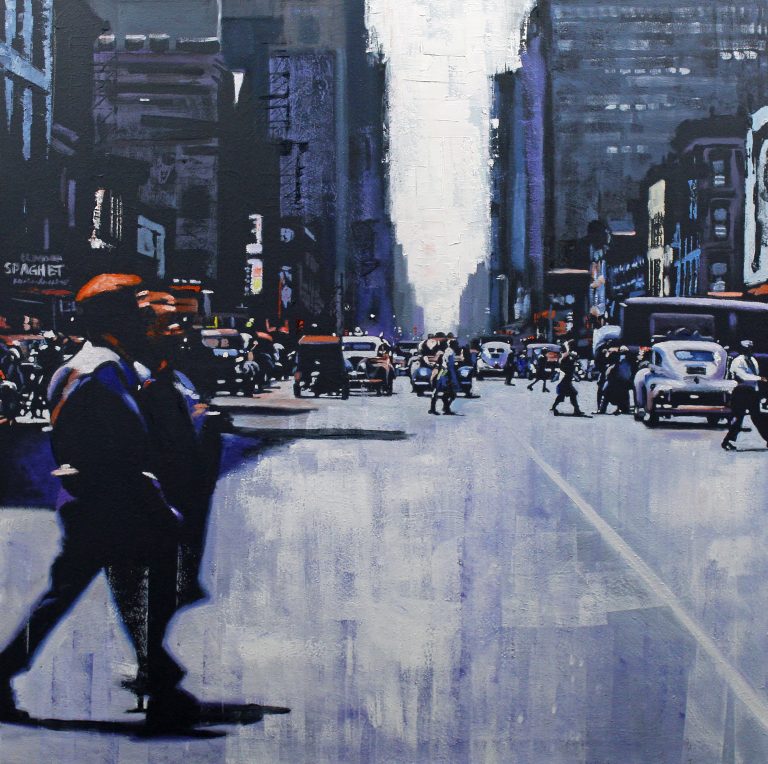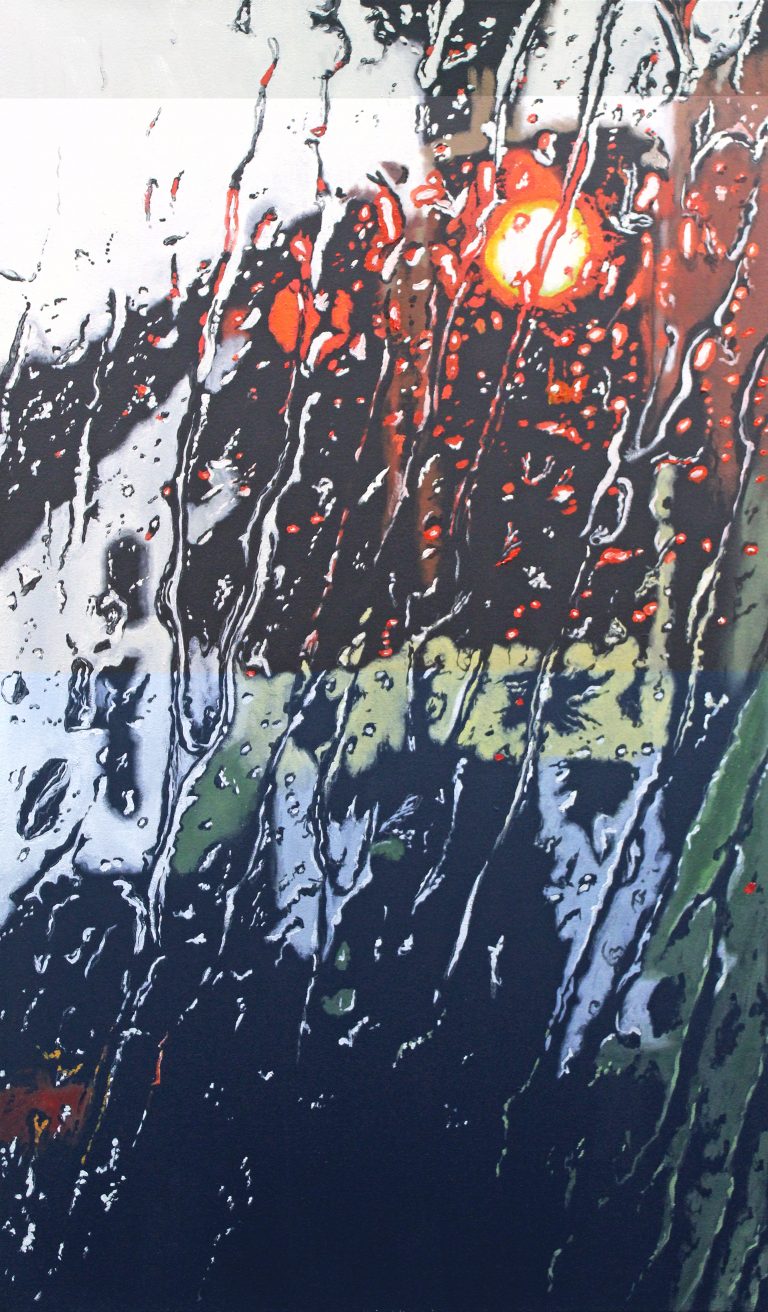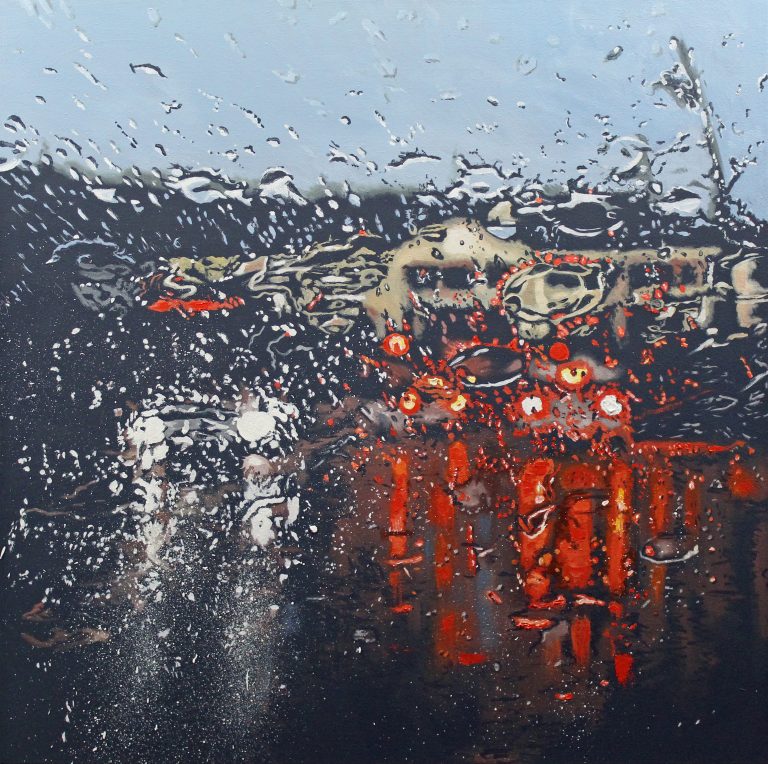The founder

Jürgen Messmer discovered his love of art while studying industrial engineering in Munich. In 1978, the entrepreneur succeeded in acquiring large parts of the estate of André Evard (1876-1972), a pioneering painter of Swiss modernism. The reappraisal of Evard’s life and work is a matter close to Jürgen Messmer’s heart.
Through Evard, Messmer found his way to concrete-constructivist art, which today forms the focus of his collection. His great passion for art motivated the former producer of exclusive writing instruments (messmer pen) to take part in various exhibition and sponsorship initiatives even in his company days.
One example is the International André Evard Prize, established by Messmer and aimed at artists from the concrete-constructivist field.
Making art and design accessible to the public – this ideal drives the collector to this day. With the foundation and museum, Jürgen Messmer has fulfilled a dream.
Interview with Jürgen Messmer
Art collector and museum founder Jürgen A. Messmer in conversation with Claudia FenkartN’jie, editor of the cultural calendar Baden-Württemberg and the book Private Art Collections BW – Private Kunstsammlungen in Baden-Württemberg (Stuttgart 2011)
Mr. Messmer, perhaps you could start by briefly telling us a few sentences about the history of your former company.
In 1986, I founded my own company, which dealt exclusively with the development and production of writing instruments and sold these self-developed products directly to industry and trade with my own sales force. This again specifically as a promotional product. Several design awards confirmed the originality and design quality of the products.
What was your path to art like? Is there a particular key experience or did you fulfill a childhood dream with art?
I came to art during my studies in Munich, I visited almost all museums at that time, especially frequently the Alte Pinakothek. Then after my studies I started collecting and grew more and more into art. A very striking key experience was the meeting with the great and important American collector Henry Drake in New York. The invitation to his house, where I encountered 20th century paintings by all the major classical modern artists, was something grandiose for me. An invitation to his chalet in Switzerland followed. His vacation home also featured artists from Van Gogh to Picasso and Kandinsky. It was Henry Drake who finally brought André Evard to my attention – I was immediately hooked!
When did you have the idea of creating an art foundation and museum?
That was in 2007, when in a conversation with Roland Doschka, a good friend and well-known exhibition organizer, the idea was born to present with an art gallery not only the own collection, but above all interesting exhibitions for the population. The idea was basically a logical consequence of the foundation’s objective: namely, to promote art. After all, only by communicating good art to many people and bringing them closer to it will artists ultimately have better sales opportunities.
The focus of the collection is the work of the Swiss artist André Evard, who has already been mentioned several times. What does this painter mean to them?
André Evard means a lot to me and we are constantly discovering new things in his multifaceted work, especially through the numerous visitors. The fact that he never allowed himself to be pressed into a template and painted figuratively as well as constructively throughout his life, and did so at a high level, fascinates me to this day. In his work, one can recognize a unique line of development that begins in Art Nouveau and continues to expressionist, but still representational pictorial motifs as can be seen, for example, in his painting “Pont Neuf”. In the 20’s Evard went a big step further and found between 1923 and 1925 to abstraction. Concrete Constructivist paintings such as the Machine Picture of 1925 or later, after the war, “Kabuki” are unique testaments to this directional style that makes Evard so special to me. The artist designated his important paintings on the back with a “PP” as an abbreviation for “propriété privée”, which denoted his private property. In these works, which he painted virtually only for himself, he tried out avant-garde techniques and found his way to the concrete-constructive. These important works, especially from the 1920s, are fortunately almost complete.
Which other artists in your collection are particularly close to you? Can you give us some examples?
The big names like Picasso or Dix, which I bought comparatively early for my collection, don’t mean quite as much to me today as they used to. More important for me have become the classics of the concrete-constructivist direction such as Francois Morellet and Alberto Magnelli. Werner Bauer, Hellmut Bruch, Roland Helmer, Jean-Pierre Viot, Jo Niemeyer, Friedrich Geiler and Klaus Staudt are also close to my heart. This is certainly also due to the fact that many works by these artists have accompanied me for a long time, and I am also personally acquainted and friends with many of them. Works like the one by Otto Freundlich that hangs next to my desk delight me every day. Thus “Syta” by Vasarely was also always a desired image – in the run-up to our Vasarely exhibition I was finally able to fulfill this wish.
They regularly offer a prize of 10,000 euros for artists. Is the call for entries aimed at young, still unknown artists and thus serves to promote young talent, or is it open to everyone?
This award is open to all and internationally. This is also reflected in the fact that around 600 applicants from 33 nations took part in the last call for applications. This is also a great opportunity for young artists to compete with already established artists. Within the international concrete-constructivist scene, the Evard Prize has meanwhile acquired a great reputation and is considered a special event. The scene, which is, after all, based on old masters such as Max Bill and Josef Albers, as well as Anton Stankowski, Günter Fruhtrunk, Bridget Riley and the South Americans Carlos Cruz-Diez and Luis Tomasello. In addition, there are numerous young artists who carry on the legacy of the Concretists. The International André-Evard Prize has set itself the goal of promoting young, unknown artists alongside established positions and anchoring them in the concrete scene.
What else would you like to see in your collection? Is there another work that you’ve had your eye on for a long time?
There are of course already works… On the one hand, I would have always liked a classic Fontana, here the prices have freely run away. On the other hand, thanks to private and institutional loans that enrich our exhibitions, I am now able to present artists of a high caliber that I would not be able to acquire in this diversity for my own collection. Nevertheless, I have some wishes for the collection. Especially in the concrete-constructive line I still want to acquire some things. I would be especially happy to see an Agam, works by Richard Paul Lohse or Camille Graeser. I would also welcome the opportunity to acquire further works by Max Bill for the collection.
Newsletter
Our newsletter with information about our exhibitions, artists, and much more! (Free & cancelable at any time)
Impressions
Last exhibition:
Bella Italia – Enrico Ghinato & Vespa
02.03. – 23.06.2024





From 28.01.2024: Charming (im)finiteness – Zhuang Hong-Yi & Lu Luo



